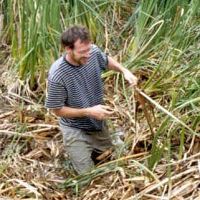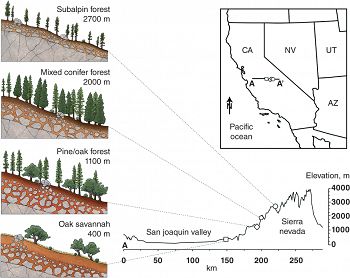Klos et al., 2018
Subsurface plant-accessible water in mountain ecosystems with a Mediterranean climate
Klos, P. Z.; Goulden, M.; Riebe, C. S.; Tague, C.; O’geen, A. T.; Flinchum, B. A.; Safeeq, M.; Conklin, M. H.; Hart, S. C.; Berhe, A. A.; Hartsough, P. C.; Holbrook, S.; Bales R. C.; (2018)
Hydrological Processes: 10.1002/wat2.1277
-
Sierra, INVESTIGATOR
-
Sierra, INVESTIGATOR
-
Sierra, INVESTIGATOR
-
Sierra, COLLABORATOR, GRAD STUDENT
-
Sierra, INVESTIGATOR
-
Sierra, INVESTIGATOR
-
Sierra, INVESTIGATOR
-
Sierra, INVESTIGATOR
-
Sierra, INVESTIGATOR
-
Boulder, Calhoun, Eel, Reynolds, Sierra, COLLABORATOR
-
Sierra, INVESTIGATOR
-
Sierra, COLLABORATOR
Abstract
Study site locations and cross-sectional depictions of the Southern Sierra CZO and its ecosystems. The four focal sites of the CZO span an elevation and climatic gradient from low to middle elevations on the western flank of the Sierra Nevada of California, USA. Watersheds situated on the western flank provide surface water and groundwater recharge that support agricultural, municipal, and industrial water demands in the San Joaquin Valley and across California
Enhanced understanding of subsurface water storage will improve prediction of future impacts of climate change, including drought, forest mortality, wildland fire, and strained water security. Previous research has examined the importance of plant-accessible water in soil, but in upland landscapes within Mediterranean climates, soil often accounts for only a fraction of subsurface water storage. We draw insights from previous research and a case study of the Southern Sierra Critical Zone Observatory to define attributes of subsurface storage; review observed patterns in their distribution; highlight nested methods for estimating them across scales; and showcase the fundamental processes controlling their formation. We review observations that highlight how forest ecosystems subsist on lasting plant-accessible stores of subsurface water during the summer dry period and during multiyear droughts. The data suggest that trees in these forest ecosystems are rooted deeply in the weathered, highly porous saprolite or saprock, which reaches up to 10–20 m beneath the surface. This review confirms that the system harbors large volumes of subsurface water and shows that they are vital to supporting the ecosystem through the summer dry season and extended droughts. This research enhances understanding of deep subsurface water storage across landscapes and identifies key remaining challenges in predicting and managing response to climate and land use change in mountain ecosystems of the Sierra Nevada and in other Mediterranean climates worldwide.
Citation
Klos, P. Z.; Goulden, M.; Riebe, C. S.; Tague, C.; O’geen, A. T.; Flinchum, B. A.; Safeeq, M.; Conklin, M. H.; Hart, S. C.; Berhe, A. A.; Hartsough, P. C.; Holbrook, S.; Bales R. C.; (2018): Subsurface plant-accessible water in mountain ecosystems with a Mediterranean climate. Hydrological Processes: 10.1002/wat2.1277. DOI: 10.1002/wat2.1277
 This Paper/Book acknowledges NSF CZO grant support.
This Paper/Book acknowledges NSF CZO grant support.
Explore Further













